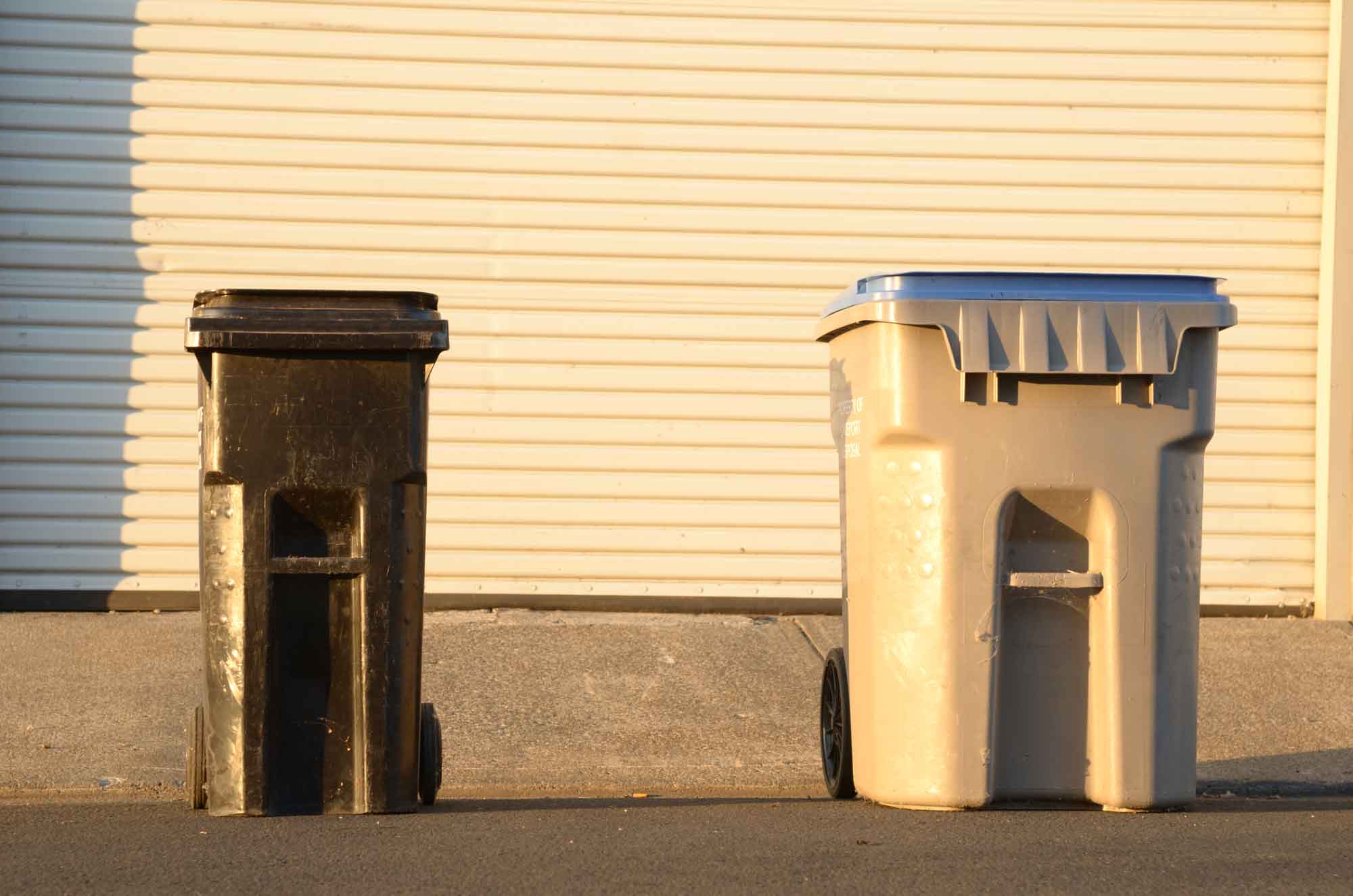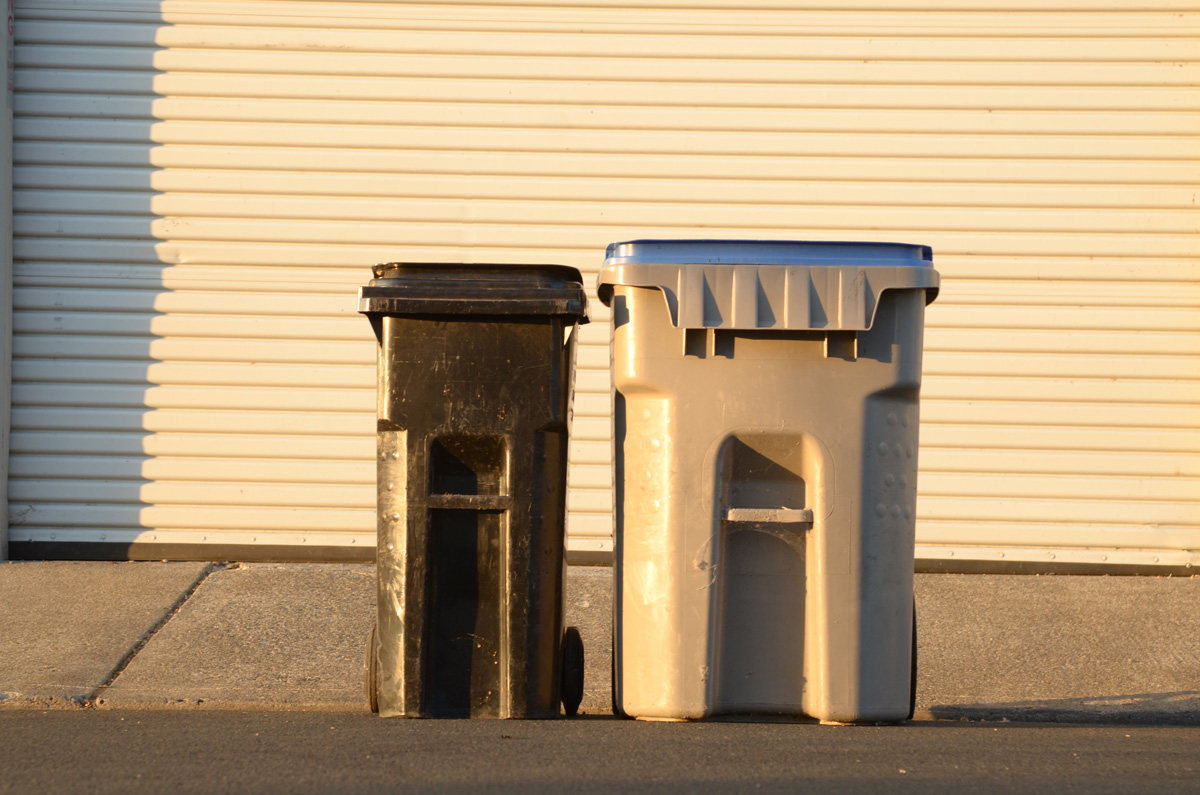Recycling Tips
Notice: beginning January 1, 2016, styrofoam will no longer be accepted in recycle bins.
Below you’ll find important info about what is recyclable and how to make sure our team can pick-up your Recycling and Yard Waste carts. Quicklinks:
Residential recycling is picked up on your regular garbage day. Depending on service type, multi-family and commercial service may have a different collection schedule. Residential customers must place carts at curb or road edge for collection.
Single Stream Recycling
General Guidelines
- Place all recyclables together in the BLUE CART
- No Garbage
- No Plastics except Houshold Containers
- Rinse or empty containers
- Remove Lids
- No Liquids
- Recycling is collected weekly on your regular garbage collection day
Mixed Paper & Cardboard
Flatten or cut boxes to fit loosely inside BLUE CART. Place shredded paper in paper bags.
- White and Colored Paper
- Office Paper and Envelopes
- Newspaper
- Magazines and Catalogs
- Junk Mail and Envelopes
- Paperback and Phone Books
- Waffle-type (corrugated) Cardboard
- Single Layer Cardboard (cereal, shoe boxes, etc.)
- Food Contaminated Paper
- Napkins, Towels, Tissues
- Photographs or Blueprint Paper
Milk Cartons
Empty before recycling. Remove plastic straws and tops.
- Milk Cartons
- Drink Boxes
- Juice Concentrate Cartons
- Frozen Food Packaging
- Plastic Lined Cartons
- Straws or Pop Tops
Glass Bottles & Jars
Remove caps and empty containers before recycling.
- Clear and Colored Glass
- Food and Beverage Jars
- Leave Labels On
- Jar Lids or Caps
- Window or Mirror Glass
- Ceramic, Dishes or Stemware
Plastic Containers
Wash and squash, remove caps. Empty containers before recycling.
- Household Containers
- Milk and Water Jugs
- Soda and Juice Bottles
- Shampoo and Detergent
- Yogart and Deli Tubs
- Pasta and Deli Trays
- Non-containers
- Pipe or Hose
- Garden Pots/Trays
- Tarps, Feed Sacks
- Plastic Toys
- Plastic Buckets
- Plastic bags
Metal Cans
Wash and squash, leave labels on. Empty before recycling.
- Aluminum Cans
- Steel and Tin Cans
- Bimetal Cans
- Empty Paint/Aerosol Cans
- Small Plastic Caps
Materials that are Not Recyclable

Food & Wet Waste, soiled paper plates & napkins

Styrofoam containers, Packing material & Peanuts

Pizza Boxes, waxed cardboard & paper cat/dog food bags

Chip Bags

Frozen food bags

Hazardous & toxic product containers
Batteries & Electronics

Light bulbs & fluorescent tubes

Tarps, hoses & PVC pipe

Ceramics, dishware & glassware
Yard Waste & Compost
Place all yard waste & compost in the GREEN CART
- Grass Clippings
- Leaves
- Branches no longer than 48 inches
- Wood debris with nails but no large brackets
- Vegetables
Please Compost
- Leaves
- Grass clippings
- Prunnings
- Flowers
- Sawdust
- Vegetable trimmings
- Coffee grounds
Do Not Compost
- Bones
- Dog and cat feces
- Un-chopped wood
- Plastics
- Meat, fish, poultry
- Diseased plants
- Dairy products
- Wood ash
Green Waste – Accepted Materials




![]()
Cart Placement
Yes

No

Cart Placement Guidelines Keep carts three-feet away from other containers or structures. 1. The truck’s lifting arm needs at least three-feet on either side of the rolling cart to wrap around the container. Place carts three feet from other carts, telephone poles, automobiles, mailboxes, basketball poles or other structures that will prevent the truck’s lifting arm from grasping and lifting the carts to empty them into the truck. 2. Be sure the arrows on the lid are pointing towards the street. Face each cart so that the arrows on the lid face the street and the hinges face away from the street. This allows the lid to open fully when the cart is tipped over above the truck bay. If the hinge faces the wrong way, the lid or hinges may be damaged. 3. Make sure that there is a twelve-foot vertical clearance above carts. Keep carts away from low phone or electric wires, low hanging tree branches or other overhead obstructions. The twelve-foot vertical clearance is necessary for the truck’s lifting arm to elevate the can above the loading bay where it is emptied. 4. Do not place carts behind parked cars, fire hydrants, trees or other obstructions. Do not place carts where access to them is blocked. The automated truck lifting arm is not able to reach behind trees or other objects. 5. Place carts no more than two-feet away from the curb or road edge. The automated lifting arm, when fully extended, has a horizontal reach of only three-feet. Be sure the cart is placed on a level surface within three feet of the road’s edge.
